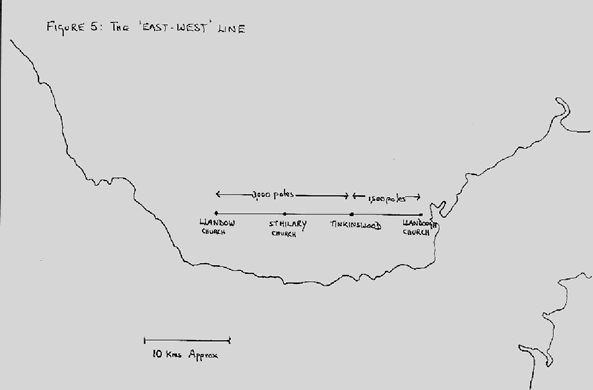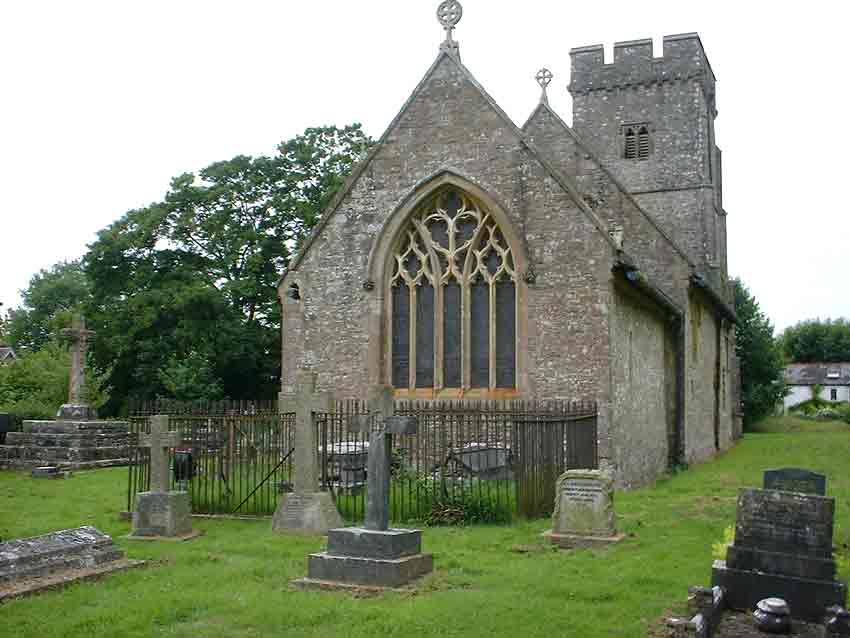
THE EAST-WEST LINE
There are four ancient sites on this line. The mediaeval churches of Llandow, St Hilary and Llandough occupy three of them; the Tinkinswood Burial Cairn occupies the fourth. Tinkinswood is over 6,000 years old. It is probable therefore that the three other sites date from a similar time, although the churches are, of course, mediaeval.

Fig 5 The East-West Line
Note first how the line runs east-west. The bearing is 090-270 degrees precisely. Secondly note the regular spacing of the sites along the line. They are set approximately 1500 Poles (3 Celtic Leagues or about 7.5 kilometres) apart.
If today we travel westwards for 1500 poles from Llandow church we find ourselves in the sea. However, we know that 6,000 years ago the sea was not where it is today. All along this coastline there is evidence of rapid erosion. Other evidence suggests that alignments such as the East-West line were anchored on the coast. By looking at a number of alignments we can begin to build up a picture of where the coastline might have been 6,000 years ago.
It appears that two of the churches on the East-West line may have been repositioned slightly. Thus the mediaeval church at St Hilary lies about 25 poles to the south-west of where it should be to maintain the regular spacing on the line. Llandough church lies about 10 poles to the east.
However, St Hilary also lies on a north-south alignment of four churches, the others being Flemingston, St Athan and Gileston, which is situated close to the shore. Its builders may have moved St Hilary out of its strictly accurate position on the east-west line at the time the north south alignment was constructed.

The fine mediaeval church at St Hilary is 25 poles out of alignment on the East West line
BACK: Home Page and Index